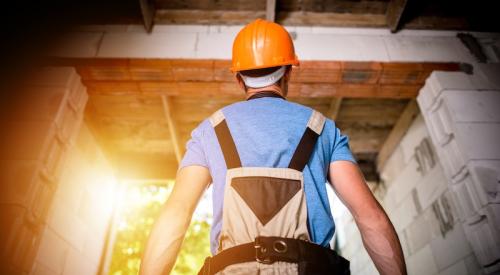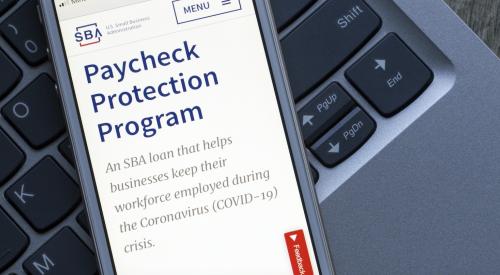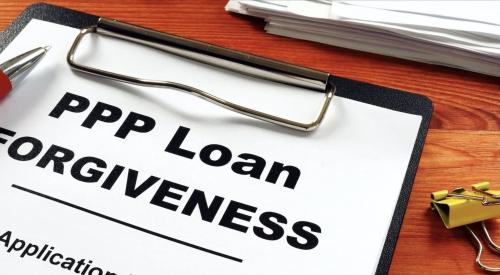On April 3, the Paycheck Protection Program (PPP) officially launched, joining the Economic Injury Disaster Loan (EIDL) as an option for disaster relief due to the coronavirus under the recently enacted CARES Act. The PPP, which many home builders will qualify for, is aimed to help small businesses pay rent, utilities, mortgage interest, and employees during the coronavirus pandemic for up to eight weeks.
Although the program is live, some builders are still unsure of some of the PPP's details. Three builders pursuing loans outlined in the CARES Act, Heather Dosch, CEO of John Buchan Homes (JBH) in Seattle, Wash., Jonathan Schoenheider, owner of Regency Builders in Pewaukee, Wis., and Mike Schaap, CEO of Mike Schaap Builders, in Holland, Mich., weigh in.
6 questions (and answers) to commonly asked questions about the PPP and other financial aid programs:
1. What are the differences between the EIDL, the PPP, and the $10,000 small-business loan advance?
- A Paycheck Protection Program (PPP) loan is a two-year forgivable loan for small-business owners that's designed to help owners pay rent, mortgage interest, utilities, and keep employees on the payroll for up to eight weeks. Builders can apply until June 30, but the entire program has $349 billion authorized. Once that runs out, the federal government will have to pass additional legislation to renew the funds.
- An Economic Injury Disaster Loan (EIDL) is a 30-year disaster-relief loan available for small-business owners that is not forgivable and existed before the CARES Act, though restrictions are now looser for those applying for COVID-19–related assistance.
- The $10,000 EIDL advance is a loan advance that acts as a grant and will not have to be repaid. Builders can apply for it in the EIDL loan application. If they qualify to apply, they will receive a loan advancement regardless if they receive a full EIDL loan.
Applications for both the PPP and EIDL are open now. For a full description of each, visit here for the PPP, here for the EIDL, and here for the loan advance.
Looking for an even deeper dive? Check out this comparison of the PPP and EIDL by CliftonLarsonAllen (CLA), a wealth advisory, outsourcing, audit, tax, and consulting company, and head over to the Basement Guides for full coverage on economic relief for builders, including the individual stimulus check up to $1,200.
2. Can I apply for all three?
Good news: Small businesses can apply for all three, and the order of application doesn't matter.
Potentially disappointing news: Companies aren't guaranteed to get every loan nor the full amount they request in their application.
3. What are the steps to applying for a PPP?
Businesses should fill out an application, preferably with a financial advisor, and be ready to have any additional information ready to go when the program launches at their chosen bank, Dosch says. The process was easy enough, she says, but submitting an application sooner rather than later is key.
“All of the applications filed by business owners are being queued up. My application at my bank is one of 6,000 already in receipt,” Dosch says. “My commercial banker doesn't know how they will manage the order in which they process the loan requests. Alphabetical? First in? Who knows?”
She also says her CPA reports that several of their clients are experiencing challenges with banks rejecting their request to process.
Some banks, such as Wells Fargo, are processing applications online only, so access to a computer with reliable internet will help builders that are applying to banks that have digital applications. Others are only working with previously established customers.
But Rich Woodby, who handles the finances for Mike Schaap Builders (MSB), in Holland, Mich., says the company is pursuing the loans, but that it's also heading into the PPP process with a mind to only accept the loan if it makes financial sense. He stresses the importance of leaning on a builder’s existing resources, such as accountants and attorneys they already know because “they have been deeply digging into this through the last two weeks.”
Mike Schaap, owner of MSB, also advises builders to talk to their local HBA chapters, which he says has been very helpful to his company as it wades through the loan application processes.
4. Is one loan better than the other for builders? What about the PPP’s loan forgiveness?
Dosch says builders she knows are getting approved for smaller amounts for the EIDL than they asked for in their applications. With that in mind, she says JBH applied for the PPP loan as well as the EIDL.
“The PPP loan is the big one,” Dosch says. “I know that most members of the Builder 20 Club and Vistage Business Group are looking for the PPP loan and counting on those funds coming in.”
One hallmark of the PPP loan is loan forgiveness. If a company plans to keep its staff, then the PPP is a good option, as its loan forgiveness is tied to small-business employee retention. The EIDL loan advancement can be forgiven, but the rest of the EIDL loan, if approved, is not (though builders can potentially refinance an EIDL loan into a PPP loan).
According to the U.S. Chamber of Commerce, a borrower is eligible for loan forgiveness equal to the amount the borrower spent on the following items during the eight-week period beginning on the date of the origination of the loan:
• Payroll costs (using the same definition of payroll costs used to determine loan eligibility)
• Interest on the mortgage obligation incurred in the ordinary course of business
• Rent on a leasing agreement
• Payments on utilities (electricity, gas, water, transportation, telephone, or internet)
• For borrowers with tipped employees, additional wages paid to those employees
Note: The federal government is now advising that because of high participation,
it's anticipated that not more than 25% of the forgiven amount may be for
non-payroll costs. The loan forgiveness cannot exceed the principal.
One other important note is that if a builder receives a $10,000 loan advance and later gets a PPP loan forgiven, $10,000 will be deducted from the amount forgiven.
5. Can I use my funds to pay temporary, seasonal, or part-time workers?
The short answer is yes. One stipulation is that payments must be made to people who reside in the United States.
Check here for other guidelines. Independent contractors and the self-employed can apply for a PPP loan, but they will apply later (April 10) than small businesses and sole proprietorships, which apply on April 3, 2020 (lender participation allowing).
6. When will I be able to access PPP funds?
It’s complicated. On the U.S. Treasury Department’s website and in an announcement by U.S. Secretary of the Treasury, Steve Mnuchin, a PPP fact sheet says small businesses can start applying on April 3, but it is unclear when specific lenders will open up the process and how long after that builders can access the loan. Some banks have opened up applications, while others have not begun accepting them yet. Here is a full list of potential lenders associated with the U.S. Small Business Association (SBA). though not all are accepting them at the time of publication.
Though the CARES Act initiated the program, it is ultimately up to the lenders to carry it out, and with the expected wave of small-business applications, both builders and banks are concerned. Some banks have begun accepting applications, but others are still waiting for more information from the federal government.
On April 2, Chase Bank, owned by JPMorgan Chase & Co. emailed its customers saying, “Financial institutions like ours are still awaiting guidance from the SBA and the U.S. Treasury. As a result, Chase will most likely not be able to start accepting applications on Friday, April 3rd, as we had hoped.”
Chase’s policy also highlights an additional roadblock builders may face with lenders: If a builder wanted to go through Chase, they would have needed an account with the bank by Feb. 15, 2020. Chase is now accepting applications, but the confusion on the eve of the program launch underscores some of the uncertainty for lenders in this process.
On April 3, the bank Wells Fargo published a statement:
“Financial institutions like ours continue to receive program implementation guidance from the SBA and the U.S. Treasury. Unfortunately, as a result, Wells Fargo will not be able to start accepting applications on Friday, April 3rd,” Wells Fargo, one of the banks listed on the SBA’s website that will process these loans, says on its page for Small-Business Paycheck Protection Program. “When we are able to take applications, you’ll find a link to that application on this page so check back often. Please note that when we begin taking applications, you will only be able to apply online, not by phone or in a branch. The program is open until June 30, 2020. Because we are expecting significant interest in the program from the start and longer processing times, customers may also visit the SBA website to identify other SBA lenders.”
Ready to apply? Check here for banks accepting loan applications.
Tips for builders: Find the right bank and get your ducks in a row ASAP
Dosch says it may be advisable to keep separate accounts for different relief loans: Commingling them could make it difficult to untangle costs per loan in the event of an audit. Her company is planning to use a separate, smaller account for the loans to distinguish the funds from the business' regular spending unrelated to payroll or other costs that fall under a PPP.
Besides applying as soon as possible to give a builder the best chance at securing a loan, Dosch also suggests obtaining the loan from a bank that’s right for a builder.
“Pick a bank, a lender ... ideally one you have a relationship with ... ideally a small bank that is going to pay attention to you and take care of you and get your loan applied for and can advocate for it to get pushed through” Dosch says.
Though there is a general PPP application from the government, banks may have their own forms to fill out. Dosch had to fill out a special application for her bank, which she filed before the bank could officially process it.
Want to learn more about how builders are navigating the CARES Act? Read the feature story here.










